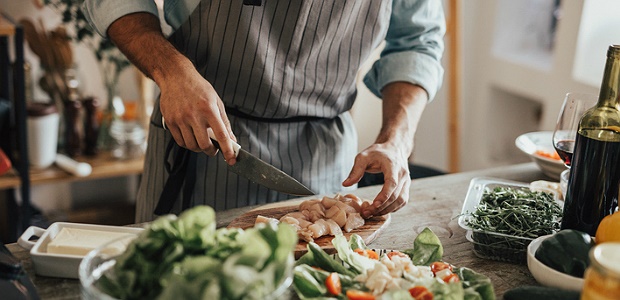(image: iStock)
ALSO READ: 5 DIY eco and wallet-friendly kitchen cleaners
South Africa is currently in the grips of one of the worst Listeria outbreaks in history, and while the National Institute of Communicable Diseases madly tests hundred of samples a week in a herculean effort to locate the source, South Africans are being asked to practice “good kitchen” hygiene.
What exactly is good kitchen hygiene? These are some top 10 things to do in order to prevent the spread of germs within your kitchen.
1. Effective hand washing (as taught by pre-school teachers the world over):
Step 1: Wet hands with water (then switch off tap to save water)
Step 2: Use soap (bar or liquid)
Step 3: Rub hands together for the duration of the “Happy Birthday” song (this can be done silently in your head or for an altogether more hilarious experience, aloud in public space)
Step 4: Rinse hands
Step 5: Dry with a clean cloth or paper towel
Do this before handling any food, after handling raw food, after touching your pets and after every trip to the bathroom. Don’t rely on hand sanitizer, there is no substitute for good old-fashioned soap and water.
2. Clean your surfaces before you start any food preparation
Use a clean cloth, and a solution of bleach and water, or vinegar to disinfect the area
3. Bleach is your friend, it kills most bacteria, viruses, and moulds
Soak your washing up cloths, kitchen sponges and brushes in a dilute bleach mixture (eg Milton’s) at least once a week. Rinse and hang in the sun (if possible). Bleach evaporates quickly so once the items are dry there should be little or no residue.
4. Chopping boards are also a source of contamination
Wash in the dishwasher (if plastic or glass) or soak in a mild bleach solution if wooden. Never chop raw meats or chicken on a board that you later use for cooked food or food that will be served raw (like salad). Once you have used a board for chopping raw meats, wash in hot soapy water. Or better yet, keep colour-coded boards for different food types.
5. Clear out your fridge regularly
Keep it clear by wiping the shelves weekly (and at the same time remove any food that is off, mouldy or past its best before date). Store raw meats at the bottom of the fridge and cooked foods (and leftovers) in the top of the fridge to avoid raw meats from dripping on cooked food. If you are defrosting meat in the fridge place it in a dish to prevent drips. Also check the settings; fridges should be between 1 and 4 °C. Pack away leftovers as soon as they are cool.
6. Wash fruit and vegetables before useThis removes pesticides as well as many soil-dwelling pathogens. Soak in a bowl of water and vinegar to remove any nasties.
7. Cook food thoroughly
Make sure the internal temperature of meats is above 60°C (with the exception of rare meats) and chicken should be above 75°C. Keeping food warm between 40 and 60°C is the “danger zone” where bacteria thrive. If reheating cooked food make sure it is above 60°C. To test the temperature of your meat, use a food thermometer which you can buy at any good kitchen shop.
8. Avoid soaking dishes in the sink
The sink is a source of lots of bugs so don’t marinade your dishes in a primordial soup. When washing up, run clean, hot, soapy water. Wash and rinse items and leave to dry on the rack (drying with damp cloths can introduce bacteria). Drain the sink and clean the sink area (especially around the plug hole).
9. Reduce household pests such as flies by emptying your rubbish bin regularly
Check behind appliances for signs of mice, rats or cockroaches, use bait as necessary. Pests spread diseases and germs and you may not even know you have them.
10. Choose the safest food possible, such as pasteurized dairy products (some cheese are made with raw milk products)
Where possible cook all foods thoroughly (for example deli meats are often suspected in Listeria outbreaks) so rather than serving a ham sandwich make it a toasted ham sandwich! Need a recipe? Check out this deluxe cheese and ham toasted sandwich.
ALSO READ…
17 Clever ways you can save water in your kitchen right now
As water restrictions in the Western Cape become even more severe, we are reminded again that South Africa is a water scarce country and we are ALL responsible for using water with care. ALSO READ: 10 Ways to lower your electricity bill when cooking It is important to save water in your own home but also important to be mindful of the bigger picture.

